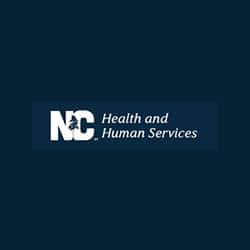
Last Updated on March 4, 2022 12:10 pm
Long after Maritza Greene recovered from two separate bouts of COVID-19, she was still battling symptoms on a daily basis. A physical therapist at The Rehabilitation Center in Boone, Greene knew this wasn’t normal and she began asking questions.
“There was something long hauling about this,” she says. “There was indescribable anxiety that I’ve never experienced before. My heart would do some flipping and then trigger immediate anxiety. Initially, it all started with my heart rate being so low. Just walking at work would take my strength.”
Using her clinical training, Greene worked to get to the root of these lingering issues and began treating herself as she would treat her patients – with a self-prescribed regimen of physical therapy and a diet focused on reducing inflammation. Though she is not yet at 100%, she is close.
Greene is not the only person to have symptoms of COVID long after the initial positive test. In the two years since COVID-19 became a global pandemic, there have been more than 65 million cases. For many of these people, mild to severe symptoms lasted for two to six weeks. However, studies are now estimating that around 20% – 50% of those who have had COVID will experience post-COVID conditions or “long COVID.”
Post-COVID conditions can appear in anyone who has had COVID even if they had no or few symptoms when they were first infected. Those suffering from post-COVID conditions will test negative for COVID-19, but they may experience COVID-like symptoms for weeks or months.
To meet the growing needs of post-COVID patients, Appalachian Regional Healthcare System has created a new multi-disciplinary Post-COVID Recovery Program. This new program will bring much needed help for the estimated 13,000 people in the High Country suffering with “long COVID” or post-COVID conditions.
According to Alicia DeBord, Physical Therapist and Manager for The Rehabilitation Center, the program was designed for “anyone previously diagnosed with COVID continuing to struggle with symptoms more than three months after diagnosis. These symptoms include shortness of breath, fatigue, muscle weakness, joint or muscle pain, nerve pain, dizziness, brain fog or forgetfulness, headache, chest pain or racing heart.”
DeBord says they are already seeing post-COVID patients in Physical Therapy, Occupational Therapy and Pulmonary Rehab. “These patients have reported improvements in all of their symptoms and all of their functional measures as tested by the therapists,” she says.
The number and frequency of visits is determined by the mutual goals of the patient and therapist. Patients may be satisfied with results after one or two visits for the physical therapy and rehab portion of the program. The exercise component, scheduled to begin in March, will consist of two sessions per week for 10 weeks, adjusted to the patient’s endurance or need.
The Post-COVID Recovery Program is a collaborative program including physical therapy, occupational therapy and pulmonary rehab, in conjunction with the exercise specialists at the Wellness Center. “Our ultimate goal is to help patients take back their lives from COVID and make improvements in any of the symptoms that are limiting their ability to fully participate in home, work and community tasks,” says DeBord.
Though patients may self-refer, some insurance plans (like Medicare) may require a referral from a primary care provider or specialist.
Greene, who now works with inpatients at Watauga Medical Center and often helps patients in the COVID unit, advises those suffering from “long COVID” to immediately ask their provider for a referral for the Post-COVID Recovery Program. “Regardless of how you feel, the fatigue alone needs to be addressed physically with a set program instead of riding it out,” she said. “Your organs can be restored, but you have to move quick you can’t just let it go. This is a physical component that can be changed.”
According to the CDC, the best way to prevent post-COVID conditions is to prevent the initial infection. People should get a CVOID -19 vaccination as soon as possible and continue to use additional prevention measures should continue to be used even after vaccination. These include wearing a mask that covers the mouth and nose, maintaining a safe distance of six feet from others, avoiding crowds with poor ventilation, and handwashing.
If you or someone you know is struggling with “long COVID” symptoms and you need more information, please visit: apprhs.org/postcovid or call: 828-268-9043.
To find out where to get a COVID-19 vaccine, visit https://apprhs.org/covid19
Sources:
https://www.nytimes.com/interactive/2021/us/covid-cases.html
https://www.cdc.gov/coronavirus/2019-ncov/long-term-effects/index.html




















